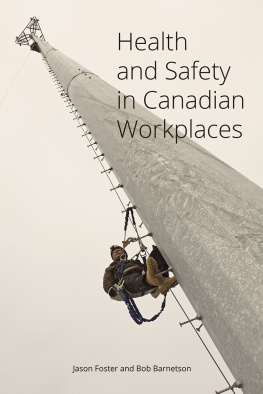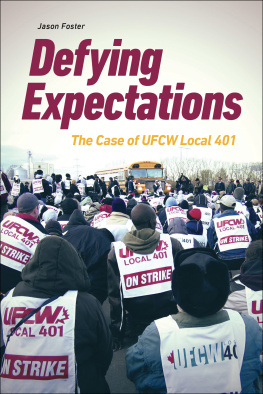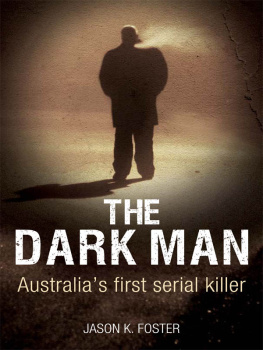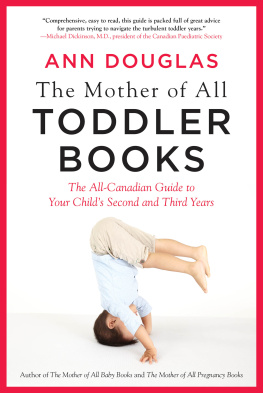Health and Safety in Canadian Workplaces
OPEL Open Paths to Enriched Learning
Series editor: Connor Houlihan
Open Paths to Enriched Learning (OPEL) reflects the continued commitment of Athabasca University to removing the barriersincluding the cost of course materialthat restrict access to university-level study. The OPEL series offers introductory texts, on a broad array of topics, written especially with undergraduate students in mind. Although the books in the series are designed for course use, they also afford lifelong learners an opportunity to enrich their own knowledge. Like all AU Press publications, OPEL course texts are available for free download, as well as for purchase in both print and digital formats.
Series Titles
Open Data Structures: An Introduction
Pat Morin
Mind, Body, World: Foundations of Cognitive Science
Michael R. W. Dawson
Legal Literacy: An Introduction to Legal Studies
Archie Zariski
Health and Safety in Canadian Workplaces
Jason Foster and Bob Barnetson
Health and Safety
in Canadian Workplaces
Jason Foster and Bob Barnetson
Copyright 2016 Jason Foster and Bob Barnetson
Published by AU Press, Athabasca University
1200, 10011 109 Street, Edmonton, AB T5J 3S8
ISBN 978-1-77199-183-4 (pbk.) 978-1-77199-184-1 ( PDF )
978-1-77199-185-8 (epub) doi: 10.15215/aupress/9781771991834.01
Cover photo Henryk Sadura / Dollarphotoclub.com, ID #33196474
Cover and interior design by Sergiy Kozakov
Printed and bound in Canada by Marquis Book Printers
Library and Archives Canada Cataloguing in Publication
Foster, Jason, 1970-, author
Health and safety in Canadian workplaces / Jason Foster and Bob Barnetson.
(Open paths to enriched learning)
Includes bibliographical references and index.
Issued in print and electronic formats.
1. Industrial safetyCanadaTextbooks. I. Barnetson, Bob, 1970-, author
II. Title. III. Series: Open paths to enriched learning
HD7262.5.C3F68 2016 363.110971 C2016-903792-4 C2016-903793-2
We acknowledge the financial support of the Government of Canada through the Canada Book Fund (CFB) for our publishing activities.
Assistance provided by the Government of Alberta, Alberta Media Fund and the Campus Alberta Open Educational Resources (OER) Initiative.
Please contact AU Press, Athabasca University at aupress@athabascau.ca for permissions and copyright information.
Contents
Acknowledgements
The Government of Alberta funded the development and production of this textbook through its Open Education Resource (OER) funding program. The central premise of OER is that knowledge should be made freely available to students, workers, community groups, and employers. Accordingly, this book can be downloaded from the Athabasca University Press website (www.aupress.ca) and shared free of charge. It will also be available for purchase in printed format at a nominal cost.
In addition to acknowledging funding provided by the Government of Alberta, the authors would like to thank the two anonymous reviewers whose comments were most helpful as well as the various workers, trade unionists, and occupational health and safety activists who have generously shared their knowledge with us over the years. We would also like to thank our families and co-workers for their indulgence and support while we completed this manuscript.
Preface
Workplace injuries happen every day and can profoundly affect workers, their families, and the communities they live in. This textbook provides workers with an introduction to effective injury prevention. The book pays particular attention to how issues of precarious employment, gender, and ill health can be better handled in Canadian occupational health and safety (OHS).
This introduction to OHS differs from others because it contends that the practice of occupational health and safety can only be properly understood if we acknowledge that workers and employers have conflicting interests. Specifically, we investigate which workplace hazards are recognized and controlled, the manner in which these hazards are controlled, and who makes these decisions. These are all factors that reflect the broader political economy of employment and suggest that OHS is contested terrain.
 | Workplace Injury in Theory and Practice |
Learning Objectives
After reading this chapter, you will be able to:
- Define the term workplace injury.
- Explain how work-related injuries are socially constructed and why that is important.
- Distinguish between root and proximate cause.
- Explain the occurrence of workplace injuries from both the technical and political economy perspectives.
- Identify common causes of injury under-reporting.
On Monday, April 23, 2012, the Lakeland sawmill exploded and then burned, lighting the night sky of Prince George, British Columbia. The explosion and subsequent fire killed Alan Little, 43, and Glenn Roche, 46, and injured more than twenty other workers. Brian Croy, a vice-president with the United Steelworkers local, was sitting in a training session when the mill exploded. The rooms plywood walls were blown down on top of the workers, and Croy and his colleagues escaped through a section of outer wall that had been destroyed by the blast.
Its almost like you were coming out of a war zone. Everything was leveled. I met one fellow I think his fingers were blown off, and his clothing, a lot of it was gone. It was off and his hair, Croy told The Canadian Press. Upon arriving at an outdoor first-aid station, Croy found workers sitting on a tarp, holding up burned arms and hands while one worker lay naked on the tarp, burned black and without any hair.1
A WorkSafeBC investigation found that an overheated fan shaft had ignited the dust-laden air, resulting in the explosion.2 Wood dust is a well-known explosion hazard in sawmills. The Lakeland mill was sawing large amounts of trees killed by pine beetles. This wood is extremely dry and, when milled, creates a large amount of fine dust.
The employer had been aware of the dust issues, and five dust-related incidents (e.g., fires) had been recorded in the months leading up to the explosion. The employer had failed to remediate the hazard or, indeed, engage in adequate preventive maintenance of the mills systems. Internal safety inspections were inconsistently undertaken and dust buildup was not mentioned, with some workers stating that they were tired of complaining about it as nothing was ever done.
The Lakeland mill explosionone of two in BC that yearwas a major workplace incident. Yet, sadly, these deaths and injuries were but a drop in the bucket. In 2012, the Association of Workers Compensation Boards of Canada (AWCBC) reported 245,365 accepted workers compensation claims for time-loss injuries. Time-loss injuries are injuries so serious that workers cannot go to work for a period of time. The AWCBC also reported 977 accepted workplace fatality claims.3 As well see below, these (alarming) statistics significantly under-report the true level of workplace injury in Canada.















